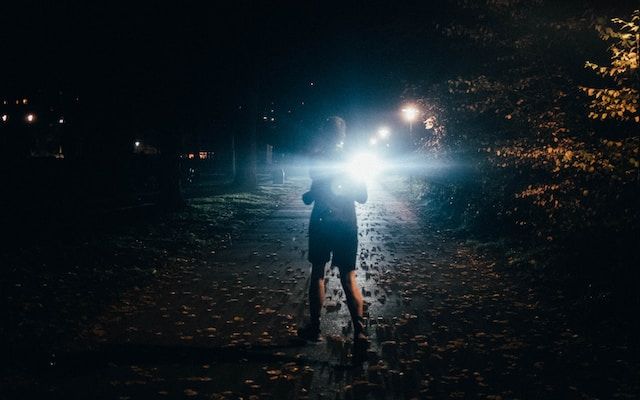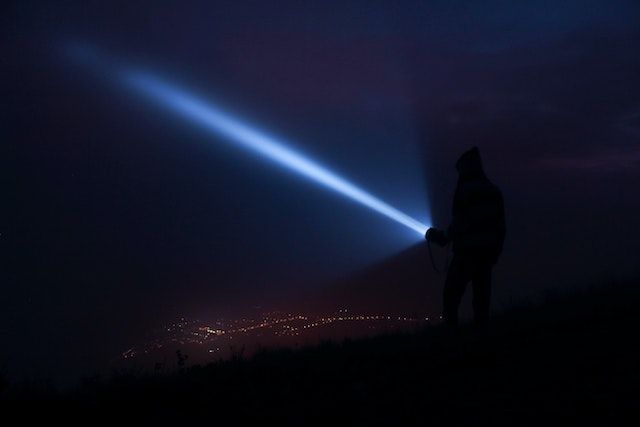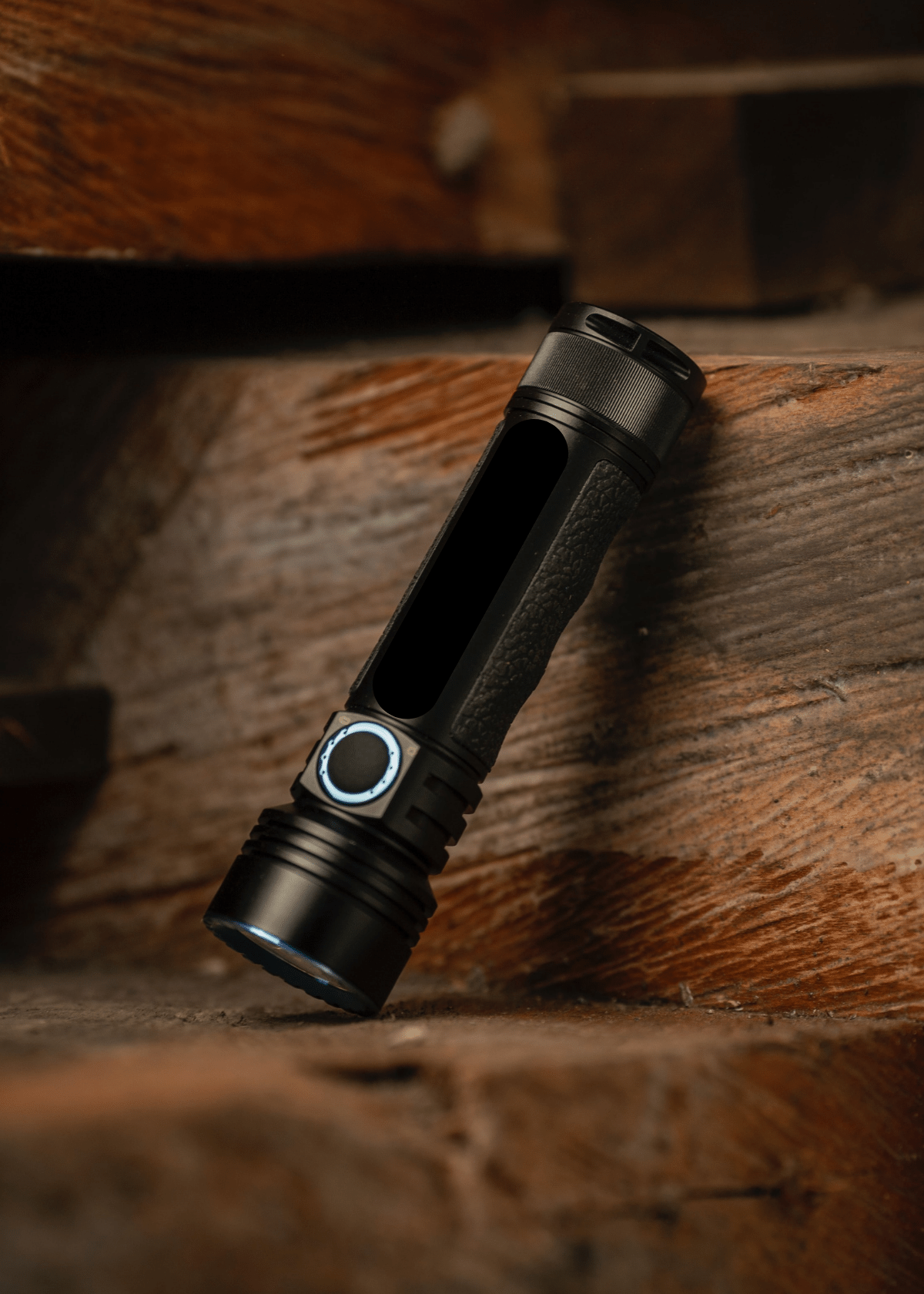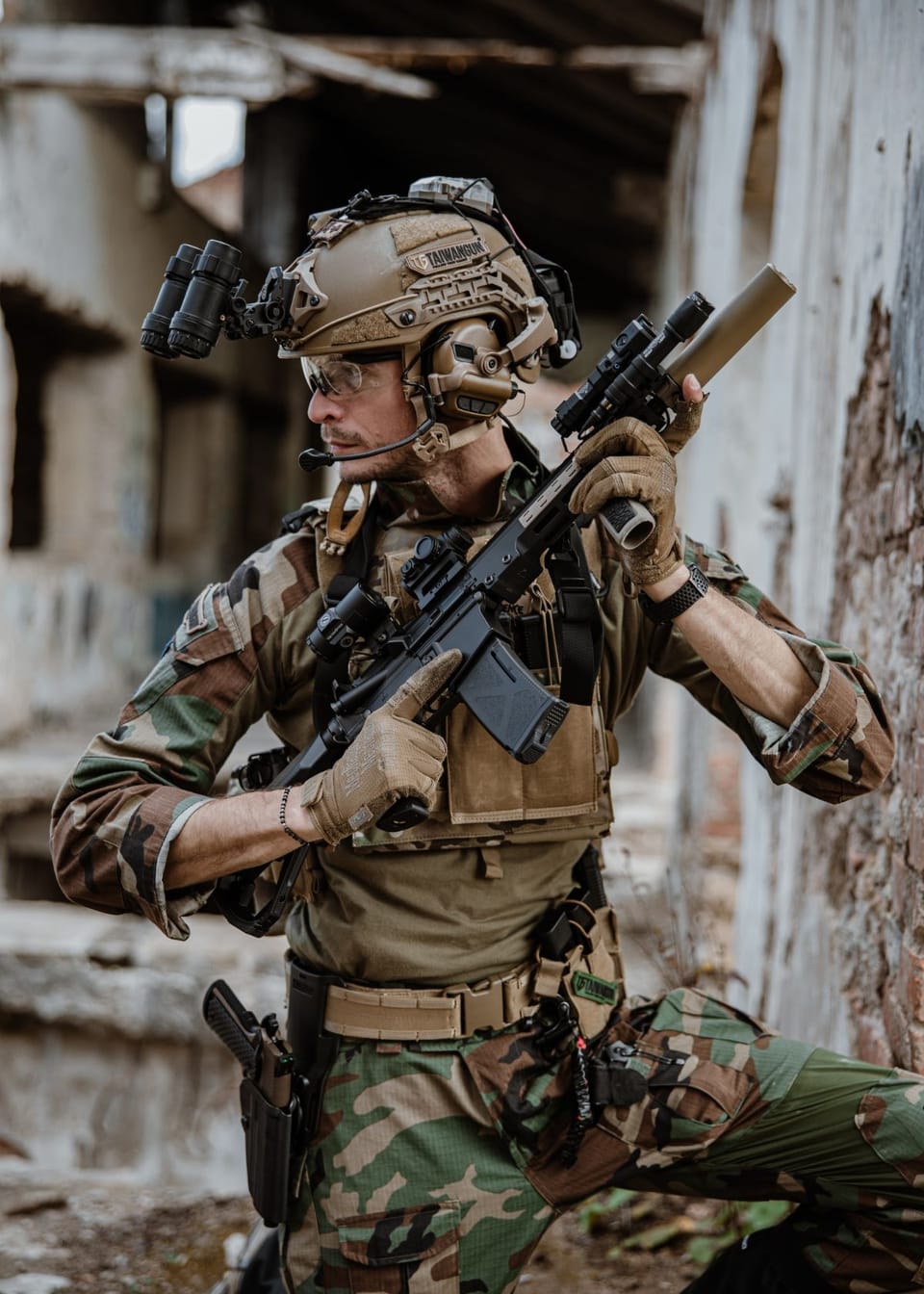How To Charge A Tactical Flashlight: Everything You Need To Know
Are you considering purchasing a tactical flashlight but don't have all the info? Read our guide on how to charge your tactical flashlight today.

Tactical flashlights provide multiple uses and should be considered an essential tool for every household. Before purchasing one, there are many factors to consider.
In this guide, we'll cover the primary features & functions, pros vs cons list, in addition to the most frequently asked questions consumers have when choosing the right product.



Tactical Flashlights By Definition
According to Wikipedia, “A tactical flashlight is a flashlight used in conjunction with a firearm to aid low-light target identification, allowing the marksman, law enforcement officer or soldier to simultaneously aim a weapon and illuminate the target.”
A tactical flashlight is a special kind of flashlight that has various uses, especially in situations where you need a strong and reliable source of light. It's designed to be durable and provide a bright, focused beam of light. They have been around since the late 1890's and have advanced technology ever since.
Here are some simple ways a tactical flashlight can be used:
- Illumination: The primary purpose of a tactical flashlight is to provide bright illumination in dark environments. Whether you're camping, walking at night, or experiencing a power outage, a tactical flashlight can help you see clearly and navigate safely.
- Self-defense: A tactical flashlight can also be used as a self-defense tool. Many models are built with a sturdy construction and features like a beveled edge or a striking bezel, which can be used to deliver a powerful strike to an attacker, providing you with a means to protect yourself.
- Emergency signaling: If you find yourself in a distressing situation, a tactical flashlight can serve as an emergency signaling device. By flashing the light in a specific pattern, such as Morse code's SOS signal (... --- ...), you can attract attention and communicate for help.
- Outdoor activities: Whether you're hiking, hunting, or exploring, a tactical flashlight can be incredibly useful. It can help you navigate through dense forests, caves, or dimly lit areas, and it can also be used to spot wildlife or track footprints in low-light conditions.
- Everyday tasks: A tactical flashlight can come in handy for everyday tasks that require additional light. For example, if you're working in a poorly lit area, fixing your car at night, or searching for lost items under furniture, a tactical flashlight can provide the extra illumination you need.
Battery Usage
Primary lithium batteries are commonly used with tactical lights, due to the long shelf life, high specific energy, and gradual voltage decay over the battery's lifetime.
Alkaline batteries also provide moderately long shelf life and low initial cost. In powerful lights with high current draw, the high internal resistance of alkaline cells results in decreased effective capacity.
As the rate of discharge increases, a greater proportion of the cells' power is wasted in its internal resistance. Because of their low internal resistance, lithium batteries are often the primary cell of choice when a high rate of discharge relative to nominal capacity is required.
Lithium cells will also provide better performance in cold weather than alkaline cells. High-quality lithium cells are less prone to leakage of electrolyte than alkaline.
How To Charge Tactical Flashlight
To charge a tactical flashlight, you have a few options depending on the model. If it has a rechargeable battery, connect the flashlight to a power source using a USB cable or a charging dock.
For flashlights that use replaceable batteries, have spare batteries on hand and replace the depleted ones with fully charged ones. If your tactical flashlight has a solar panel, expose it to direct sunlight for the recommended charging time.



Tactical Vs Standard Flashlight
Pros of a tactical flashlight compared to a standard flashlight:
- Durability: Tactical flashlights are typically built with robust materials and are designed to withstand rough handling and extreme conditions. They are more durable and resistant to impact, making them suitable for outdoor activities and emergencies.
- Brightness and Beam Distance: Tactical flashlights often have higher lumen output and a longer beam distance compared to standard flashlights. This means they can provide a brighter and more focused light, allowing you to see objects in greater detail and over longer distances.
- Versatility: Tactical flashlights often come with additional features and modes, such as strobe or SOS signaling, adjustable beam focus, and different light intensity levels. These extra functionalities make them more versatile and useful in various situations, including self-defense, signaling, and specific lighting requirements.
Cons of a tactical flashlight compared to a standard flashlight:
- Size and Weight: Due to their rugged construction and additional features, tactical flashlights are generally bulkier and heavier than standard flashlights. This can make them less convenient to carry in your pocket or bag, especially if you're looking for a compact and lightweight option.
- Cost: Tactical flashlights are usually more expensive than standard flashlights. The added durability, brightness, and features come at a higher price point. If you have a limited budget or simply don't require the tactical features, a standard flashlight may be a more cost-effective choice.
- Complexity: Tactical flashlights often offer various modes and settings, which can make them more complex to operate and navigate through different functions. If you prefer a straightforward flashlight without extra bells and whistles, a standard flashlight might be simpler to use and maintain.
Tactical Flashlight FAQs
How do you recharge a rechargeable flashlight?
To recharge a rechargeable flashlight, you typically need to follow these steps.
First, ensure that the flashlight is compatible with recharging and has a built-in rechargeable battery.
Then, connect the flashlight to a power source using a USB cable or a charging dock provided with the flashlight.
Plug the USB cable into a power outlet or a USB port on your computer or a compatible charger.
Allow the flashlight to charge for the recommended duration, as specified by the manufacturer, before disconnecting it from the power source.
How do you change the batteries in a tactical flashlight?
To change the batteries in a tactical flashlight, follow these steps. First, determine the type of batteries your flashlight requires, such as AA or AAA.
Next, locate the battery compartment, typically found at the rear or within the handle of the flashlight.
Open the battery compartment by unscrewing or sliding off the cover, remove the depleted batteries, and insert new batteries in the correct orientation as indicated by the markings inside the compartment.
Finally, securely close the battery compartment, ensuring a tight seal to maintain the proper functioning of the flashlight.
How long does it take to charge a tactical flashlight?
The charging time for a tactical flashlight can vary depending on the specific model and its battery capacity.
Generally, it can take anywhere from a few hours to several hours to fully charge a tactical flashlight.
It is essential to refer to the manufacturer's instructions or specifications for the recommended charging time to ensure optimal performance and prevent overcharging, as the exact duration can differ between different flashlight models and their charging mechanisms.
So, if you're ready to shop for a tactical flashlight and need a little push here's our picks for best rechargeable tactical flashlights and most durable tactical flashlights on the market.

Your Friends,
LoveNatureReviews Team





